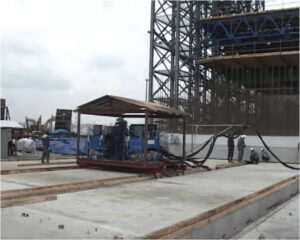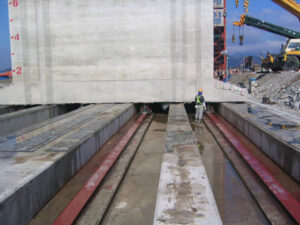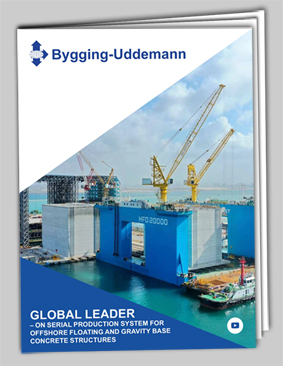The advantages of our hydraulic skidding system
The Bygging-Uddemann hydraulic skidding system is distinguished to others by being extremely robust (can handle loads up to 20,000 tons) and consist of two main components; skidway beams and steel tracks.
The skidway beams are skidding system supports made out of concrete on which the object to be moved will be skidded from the beginning to the end of the transfer lane. As well as where the object will rest between transfers. The steel tracks consist of 20mm x 300mm steel plates installed on structural concrete (continuous beams) on a base rest and fixed with mortar and screws embedded in concrete. The sides of the steel tracks allow skidding units to grip and pull to horizontally move the object.
Our hydraulic skidding equipment units (IP-CCVs) consist of jacks sitting on a base plate. The base plate has low friction pads that are attached underneath for sliding over the steel track. The skidding system can be used either at ground level or at a height and it has a user-friendly construction that easily adapts to each load size. This is because although each unit is small, linking several units provides an enormous lifting force.
For many tasks, a hydraulic skidding system is a much safer and more effective solution for moving complex objects such as cassions and offshore foundations, compared to cranes.




